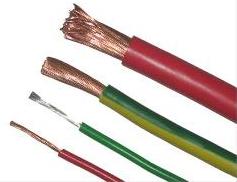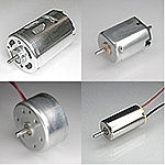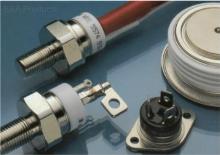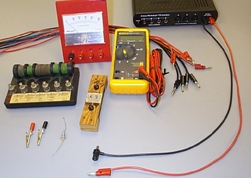 This circuit of connecting an electric meter (single-phase and three-phase) is called direct. It is the most simple and quite common in its use in practice in everyday life.
This circuit of connecting an electric meter (single-phase and three-phase) is called direct. It is the most simple and quite common in its use in practice in everyday life.
According to the norms, up to 3 kW is allocated for one apartment (for apartments with an electric stove - 7 kW). At this power, the current will lie within 13.5 A.
On the counters there is an inscription about its characteristics, among which the rated and maximum currents are indicated (for example, it is usually written like this: 5 - 15 A, or 10 - 40 A.). Since the counter current lies in the normal aisles of the current consumption, they are connected in a direct way (without additional current transformers).
Despite the huge variety of electric meters produced, the location of the connection terminals they all have the same. On the terminal cover itself (on the inside) there is a drawn connection diagram (just in case, if you forgot how to connect the meter) ...
Single and stranded wires. Application area. Advantages and disadvantages
 Many people, nowadays, very often have a question about why multicore and single-core wires are needed and for what purpose this or that type is used? I will try to give a clear, clear answer to this question. To do this, we will simply consider the following items separately: the structure (structure) of the multicore and single-core wires, the scope and main advantages of each type of conductor.
Many people, nowadays, very often have a question about why multicore and single-core wires are needed and for what purpose this or that type is used? I will try to give a clear, clear answer to this question. To do this, we will simply consider the following items separately: the structure (structure) of the multicore and single-core wires, the scope and main advantages of each type of conductor.
A single-core wire is a wire in which the cross section is formed by one conductor (current lead, residential). A stranded wire is a wire whose cross section is formed by several, sometimes intertwined, veins. Also, to give the wire more flexibility and elasticity, a thread can be woven with veins (it resembles kapron thread in strength and composition) ...
 Typically, electric motors are divided into three groups: large, medium and low power. For low power engines (we will call them micromotors), the upper limit of the power is not set, usually a few hundred watts. Micromotors are widely used in household appliances and devices (now every family has several micromotors - in refrigerators, vacuum cleaners, tape recorders, players, etc.), measuring equipment, automatic control systems, aviation and space technology, and other areas of human activity.
Typically, electric motors are divided into three groups: large, medium and low power. For low power engines (we will call them micromotors), the upper limit of the power is not set, usually a few hundred watts. Micromotors are widely used in household appliances and devices (now every family has several micromotors - in refrigerators, vacuum cleaners, tape recorders, players, etc.), measuring equipment, automatic control systems, aviation and space technology, and other areas of human activity.
Single-phase asynchronous micromotors are the most common type, they satisfy the requirements of most electric drives of devices and apparatuses, differing in low cost and noise level, high reliability, do not require maintenance and do not contain moving contacts ...
Triacs: From Simple to Complex
 In 1963, a large family of Trinistors appeared another "relative" - triac. How does he differ from his "brothers" - trinistors (thyristors)? Remember the properties of these devices. Their work is often compared with the action of an ordinary door: the device is locked - there is no current in the circuit (the door is closed - there is no passage), the device is open - an electric current appears in the circuit (the door opened - enter). But they have a common flaw. Thyristors pass current only in the forward direction - this way an ordinary door easily opens "from itself", but no matter how much you pull it towards you - in the opposite direction, all efforts will be futile.
In 1963, a large family of Trinistors appeared another "relative" - triac. How does he differ from his "brothers" - trinistors (thyristors)? Remember the properties of these devices. Their work is often compared with the action of an ordinary door: the device is locked - there is no current in the circuit (the door is closed - there is no passage), the device is open - an electric current appears in the circuit (the door opened - enter). But they have a common flaw. Thyristors pass current only in the forward direction - this way an ordinary door easily opens "from itself", but no matter how much you pull it towards you - in the opposite direction, all efforts will be futile.
By increasing the number of semiconductor layers of the thyristor from four to five and equipping it with a control electrode, scientists found that a device with such a structure (later called a triac) is capable of passing electric current in both forward and reverse directions ...
"Everything flows", or Ohm's Law for the curious
 Even the last loafer, having studied for some time in the 10th grade, will tell the teacher that Ohm’s law is “U is equal to I times R”. Unfortunately, the smartest excellent student will say little more - the physical side of Ohm's law will remain a mystery to him for seven seals. I allow myself to share with my colleagues my experience in presenting this seemingly primitive topic.
Even the last loafer, having studied for some time in the 10th grade, will tell the teacher that Ohm’s law is “U is equal to I times R”. Unfortunately, the smartest excellent student will say little more - the physical side of Ohm's law will remain a mystery to him for seven seals. I allow myself to share with my colleagues my experience in presenting this seemingly primitive topic.
The object of my pedagogical activity was the art and humanitarian 10th grade, whose main interests, as the reader guesses, lay very far from physics. That is why the teaching of this subject was entrusted to the author of these lines, who, generally speaking, teaches biology. It was a few years ago.
The lesson about Ohm's law begins with the trivial statement that electric current is the movement of charged particles in an electric field. If only an electric force acts on a charged particle, then the particle will accelerate in accordance with Newton’s second law. And if the vector of electric force acting on the charged particle is constant on the entire trajectory, then it is equally accelerated. Just like a weight falls under the influence of gravity.
But here the paratrooper drops completely wrong. If we neglect the wind, then its fall rate is constant. Even the student of the art and humanitarian class will answer that in addition to the force of gravity, another falling force acts on the falling parachute - the force of air resistance. This force is equal in absolute value to the force of attraction of the parachute by the Earth and is opposite to it in direction. Why?...
 The more complex the chain, the more connections. If at least one contact is broken ...
The more complex the chain, the more connections. If at least one contact is broken ...
When drawing up and installing an electrical circuit, it may be necessary to connect its parts and elements using terminals, clamps, plugs and sockets, thrust and threaded contacts and other special devices, and sometimes just twisting the bare ends of the connecting wires. Even in the simple electric circuit of a flashlight, you will count about a dozen such connections.
And the electrical circuits of household electrical appliances, tape recorders, televisions contain hundreds and even thousands of interconnected parts.
And each of these compounds should not only be mechanically strong, but also provide reliable electrical contact.
It is not so simple at all. If the conductors at the junction are not tightly pressed against each other or if their surface is covered with a film of oxides that conducts poorly electric current, then with an apparent strength of the connection it will be unreliable. And you already know that it is only in one place in the circuit to break the contact, how the current will stop and the device you made will stop working.
How to ensure the strength and reliability of numerous connections of elements and parts in complex electrical circuits? One of the most widely used methods for such a connection is soldering ...
Don’t put off until tomorrow what you can do today

“The thunder will not strike - the man will not cross himself”, “Do not put off until tomorrow what you can do today”, “Forge the iron while it's hot” - these are famous folk wisdom.
For centuries, people have felt the truth of these expressions on their own skin, regardless of what they were doing - they ate a mammoth in a cave or chopped cabbage at a flea market, planted rye in the steppes of Ukraine or gathered votes in elections ...
In addition to applying these proverbs to certain events, the meaning implied in them can be transferred to entire periods in a person’s life.
He postponed his studies, "put" to work - and the years go by, and self-realization of a person does not occur. As a result, negative consequences are not ruled out - “looked into the glass”, “stepped on a cork” or simply missed the time, which is not enough, how not to hope, then when the “cancer whistles” or “the cock bites” ...
 I don't really like formulas. Like any normal person :) They cause me a headache and a desire to throw something into the wall. All my life I tried to stay away from them. And it turned out. But now I became interested in LEDs and realized - there’s no getting anywhere. To get the desired result, you need to understand how it works. Slowly, along the steps, I began to wade through the jungle of lumen, candela, and steradian. Gradually, a picture began to form in my head. And at the same time regret - well, why was there no one to explain it in a simple accessible language? So much time wasted ... I'll try to save you from a headache and explain as much as possible what an LED is and how it works. Well, at the same time I’ll explain a couple of laws of optics :)
I don't really like formulas. Like any normal person :) They cause me a headache and a desire to throw something into the wall. All my life I tried to stay away from them. And it turned out. But now I became interested in LEDs and realized - there’s no getting anywhere. To get the desired result, you need to understand how it works. Slowly, along the steps, I began to wade through the jungle of lumen, candela, and steradian. Gradually, a picture began to form in my head. And at the same time regret - well, why was there no one to explain it in a simple accessible language? So much time wasted ... I'll try to save you from a headache and explain as much as possible what an LED is and how it works. Well, at the same time I’ll explain a couple of laws of optics :)
The article is dedicated to those who get confused in watts-candela-lumens-suites. And indeed in LEDs. Written by an advanced teapot for beginners dummies ...
